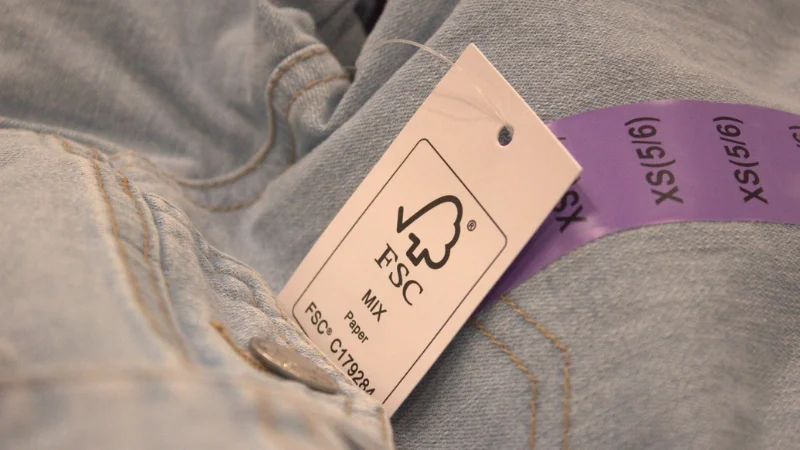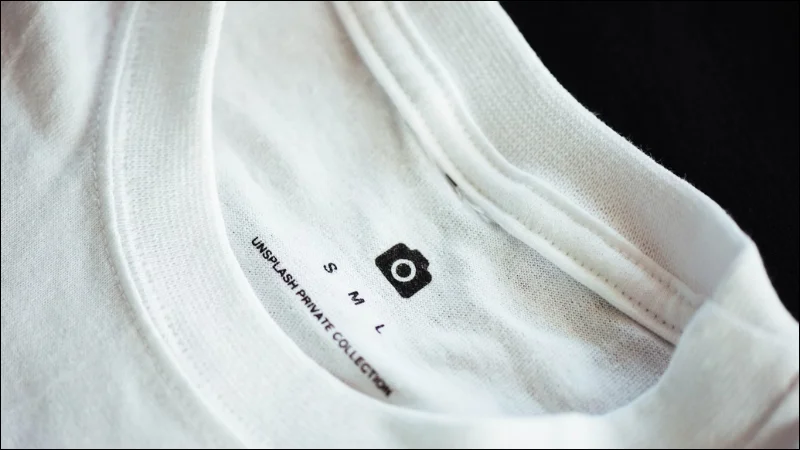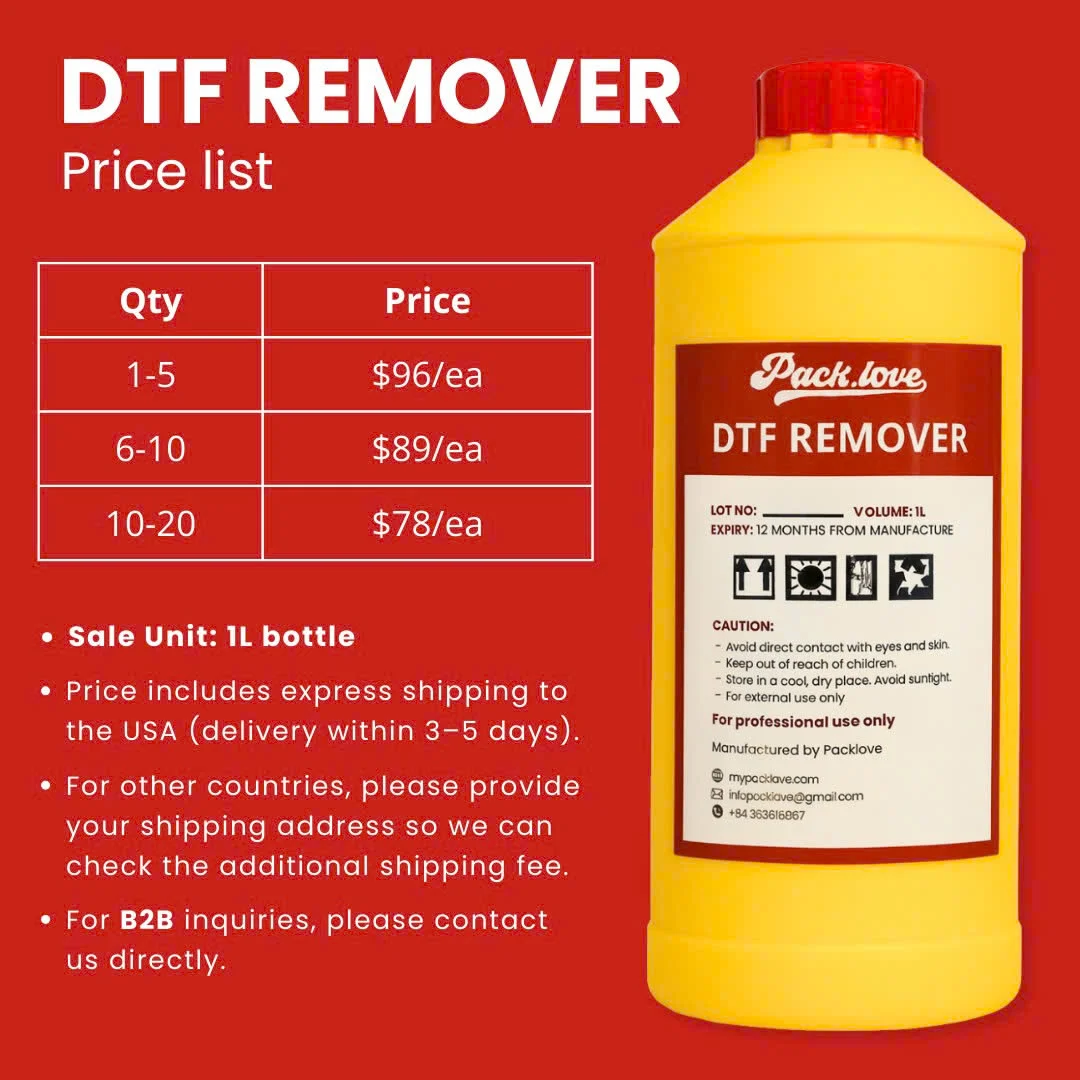Offset Printing for Clothing Tags: Quality, Cost, Volume
Selecting the ideal printing technique for your clothing brand’s hang tags, labels, or inserts is a critical decision. The quality of these small items significantly influences customer perception and your overall brand identity. Making an uninformed choice can lead to subpar results that don’t reflect your brand’s standards or incur unnecessary costs, potentially harming your brand perception. This guide demystifies offset printing (sometimes referred to as lithography), a cornerstone technology often considered for high-quality, high-volume printing needs common in the clothing business.
You will gain a clear understanding of what offset printing entails, explore its specific benefits and drawbacks for apparel branding materials like hang tags and labels, see how its quality and cost-effectiveness stack up against digital printing, and receive actionable insights. Ultimately, this article empowers you to determine if offset printing aligns with your production volume, quality expectations, and budget, enabling strategic choices for your inserts and other printed materials. Let’s start!
1. Understanding the Basics: What Does Offset Printing Mean for Your Brand?
1.1 Defining Offset
Offset printing, technically a form of lithography (printing based on the repulsion of oil and water), operates on a principle of indirect transfer. Instead of the image being pressed directly from a printing plate onto the final material (substrate, such as paper or cardstock), the ink is first transferred from the plate to an intermediate rubber blanket.
This blanket then transfers, or “offsets,” the image onto the substrate. Think of the rubber blanket acting like a high-precision intermediary stamp. The flexibility of the rubber blanket is a key advantage, as it allows the ink to conform better to the surface texture of the paper or cardstock, ensuring a smoother, more uniform print.

1.2 The Key Principle – Wet Offset
The most common form, wet offset, relies on the fundamental principle that oil and water do not mix. The printing plate, typically made of metal, is chemically treated. The image areas are designed to attract the oil-based ink, while the non-image areas are treated to attract water distributed by the press’s dampening system.
During printing, the plate is first dampened with water, which adheres only to the non-image areas. Then, when ink is applied, the ink adheres only to the image areas, being repelled by the water elsewhere. This precise separation ensures that only the intended design receives ink.
1.3 Why It Matters
This process directly translates to tangible benefits for your brand’s printed materials. The use of the flexible rubber blanket combined with the controlled ink transfer mechanism results in exceptionally high image quality. This means sharp images, crisp text (even small fonts on care instructions), clean lines for logos, and remarkably consistent color reproduction across large print runs. For clothing tags and labels, where details matter, this level of precision helps maintain brand identity and conveys a sense of professionalism and quality to your customers.
2. How Does Offset Printing Actually Work? The Journey of Your Tag Design
2.1 Prepress: Setting the Stage for Flawless Prints
Before any ink touches paper, the prepress stage is crucial for ensuring your design translates perfectly into print. This begins with your digital file. It’s essential that the artwork is correctly prepared, typically using the CMYK color model (Cyan, Magenta, Yellow, Black – the four inks used in standard offset printing), with vector graphics for logos and text where possible, and appropriate resolution for any images. A common oversight for apparel brands involves submitting files in RGB (Red, Green, Blue – used for screens) or with low-resolution elements, which can lead to unexpected color shifts or blurry prints.
Addressing these issues during prepress saves significant time and potential costs later. Modern offset printing primarily uses Computer-to-Plate (CTP) technology. Here, the finalized digital file directly guides a laser to etch the image onto thin aluminum plates – one separate printing plate is created for each of the CMYK colors (and any additional spot colors like specific Pantones). Rigorous quality control checks are performed at this stage to catch any errors before plates are made.
2.2 The Printing Magic: Ink, Water, Plates, and Blankets in Action
Once the plates are ready, they are mounted onto the plate cylinder inside the printing press. The press then orchestrates a precise sequence. The dampening system applies a thin film of water to the plate, adhering to the non-image areas. Immediately after, the inking system, via a series of ink rollers, applies the specific offset ink (e.g., Cyan) to the plate; this ink adheres only to the image areas repelling the water. The inked image is then transferred (offset) from the plate cylinder onto the rubber blanket cylinder. Simultaneously, a sheet of paper (or other substrate) is fed between the blanket cylinder and the impression cylinder.
The impression cylinder applies pressure, transferring the ink image from the rubber blanket onto the paper. This entire cycle repeats rapidly. For full-color printing using CMYK, the paper typically passes through four separate printing units sequentially, each applying one color (Cyan, then Magenta, then Yellow, then Black) in perfect registration to build the final image.
2.3 Finishing Strong: From Wet Ink to Finished Tag
As the printed sheets come off the press, the ink needs to dry or set. Common methods include cold-set (ink dries by absorption into the paper, typical for porous materials), heat-set (ovens dry the ink quickly, often used in high-speed web printing), or using UV-curing inks (which dry almost instantly when exposed to ultraviolet light, offering durability and suitability for various substrates). For sheet-fed printing, a fine anti-set-off powder is often sprayed onto the sheets as they stack to prevent the wet ink on one sheet from transferring to the back of the next.
Once dry, the printed sheets move to the finishing department. For items like hang tags, common finishing steps include cutting the sheets down to individual tag size, hole punching for attachment, scoring (creasing for folds if needed, like on folded tags or small lookbooks), and potentially applying varnishing or other coatings for protection or aesthetic appeal.
3. Key Types of Offset Printing: Sheet-Fed vs. Web-Fed for Your Business Scale
3.1 Sheet-Fed Offset: Precision and Quality for Tags & Inserts
Sheet-fed offset printing utilizes individual sheets of paper or cardstock that are fed into the press one by one. This method is renowned for its precision and ability to handle thicker, heavier materials, making it exceptionally well-suited for applications demanding high quality and rigidity. For clothing brands, sheet-fed offset is the typical choice for producing premium hang tags, detailed product inserts, small lookbooks, and other branded collateral where print fidelity and paper feel are important.
While not the fastest method overall, it provides excellent results for medium volume to large volume print runs common for seasonal tag production. The ability to use a wide range of paper weights and textures allows for significant customization to match brand aesthetics.

3.2 Web-Fed Offset: Speed and Efficiency for Massive Orders
In contrast, web-fed offset printing uses continuous rolls (also called webs) of paper that are fed through the printing press at very high speeds. The primary advantages are speed and cost-effectiveness for extremely large quantities – think hundreds of thousands or millions of pieces, such as large-scale catalogs, flyers, or simple paper inserts. Many web presses also incorporate inline finishing capabilities (like cutting, folding, or perforating) directly after printing, further boosting efficiency.
However, web-fed offset is generally better suited for lighter paper stocks and less common for the thick, premium cardstock often preferred for hang tags. While highly efficient for mass production, its setup is more complex, making it less economical than sheet-fed for moderate runs or projects requiring very heavy materials.
4. Weighing the Options: Why Choose Offset Printing for Clothing Labels & Tags?
Offset printing remains a dominant force in commercial printing for several compelling reasons, particularly beneficial for clothing brands needing high-quality tags, labels, and inserts:
- Exceptional Image Quality: Offset delivers superior sharpness, detail, and clarity. The indirect transfer via the rubber blanket allows for crisp reproduction of fine text (essential for care instructions or small logos) and intricate designs, contributing significantly to a premium brand identity. The noticeable sharpness compared to some other methods is a key differentiator.
- Unmatched Color Accuracy and Consistency: This is arguably offset’s greatest strength. It excels at reproducing specific brand colors precisely, including Pantone spot colors (pre-mixed inks for exact shades). Furthermore, color consistency across a large volume print run is excellent, ensuring all your tags and labels look identical, which is crucial for brand uniformity.
- Cost-Effectiveness at Scale: While initial setup costs (plates, press preparation) are higher than digital printing, the cost per piece drops significantly as the print quantity increases. For large volume orders typical in seasonal apparel production, offset becomes highly cost-effective. The longer the run, the lower the unit cost.
- Material Versatility: Offset presses handle a vast range of paper types, weights, textures, and cardstock. Whether you need thin paper inserts, standard hang tags, or luxurious, thick cardstock with a unique tactile feel, offset printing can likely accommodate it, offering flexibility in achieving your desired look and feel.
- Print Durability: Offset inks penetrate the paper fibers slightly and, once dried or cured, offer good durability against rubbing and handling – an important factor for tags that may be handled frequently in retail environments.
- Compatibility with Special Inks and Finishes: Offset printing readily integrates with a wide array of special inks (like metallic or fluorescent) and finishes (varnishes, foil stamping, embossing, debossing). This allows brands to add premium touches that enhance perceived value and make their tags stand out.
5. Considering the Trade-Offs: When Offset Might Not Be the Ideal Fit
While offset printing offers significant advantages, particularly for high-volume, high-quality projects, certain disadvantages make it less suitable for specific scenarios:
- Higher Initial Costs: The primary drawback involves the upfront setup costs. Creating the necessary printing plates (one for each color) and preparing the printing press (setup time) represent a fixed expense. These initial costs make offset printing significantly less economical for small batches.
- Poor Economy for Small Runs: Due to the fixed setup costs, printing very small quantities (e.g., fewer than 500-1000 pieces, depending on the project) results in a high cost per individual tag or label. The economics simply don’t favor short runs.
- Longer Initial Turnaround Time: Compared to digital printing, offset typically involves a longer turnaround time, especially for the first run. The prepress steps, plate making, press setup, and ink drying time all contribute to a lengthier process before finished products are ready.
- Inflexibility for Quick Changes: Once the printing plates are made, making changes to the artwork (even minor text edits) requires creating entirely new plates. This adds cost and delays, making offset less ideal for projects requiring frequent updates or last-minute adjustments.
- Potential for Minimum Order Quantities (MOQ): Because of the setup involved, many offset printers impose a Minimum Order Quantity (MOQ). This means they might not accept jobs below a certain volume threshold, potentially excluding businesses needing only very small batches.
6. Offset vs. Digital Printing: Making the Right Choice for Your Apparel Brand
Understanding the core differences between offset and digital printing is crucial for selecting the most suitable method for your specific hang tag, label, or insert needs. Each technology excels in different areas.

6.1 Key Differences at a Glance
This table provides a side-by-side comparison of key factors:
| Feature | Offset Printing | Digital Printing |
|---|---|---|
| Best For Quality | Highest possible, sharp details, smooth gradients | Very good, continually improving, can show stepping |
| Color Consistency | Excellent, best for large runs, supports Pantone | Good, minor variations possible run-to-run, Pantone simulated |
| Cost (< 1000 pcs) | Higher due to setup costs | Lower, minimal setup |
| Cost (> 1000 pcs) | Lower per piece, very cost-effective at volume | Higher per piece, cost doesn’t drop as significantly |
| Setup Speed | Slower (plate making, press prep) | Faster (direct from file) |
| Run Speed | Faster once set up for large runs | Slower per piece on longer runs |
| Min. Order Qty (MOQ) | Often higher | Typically lower or none |
| Material Flexibility | Wider range (thick materials, textures) | Good, but some limitations on very thick/textured stock |
| Variable Data Capability | Not practical (requires new plates) | Excellent (each piece can be unique) |
| Special Finishes Compatibility | Excellent (integrates well with most finishes) | Good, but some limitations depending on process/finish |
6.2 Choose Offset Printing When
Consider offset printing as the likely best choice for your apparel tags and labels if your priorities align with these points:
- You require the absolute highest print quality, sharpness, and detail.
- Exact color consistency across a large batch and precise Pantone color matching are critical for your brand identity.
- You are printing large quantities (typically 1000+ pieces), making the lower cost per piece at volume advantageous.
- Your project involves standard or premium paper or cardstock, potentially including textured or very thick options.
- You plan to incorporate specialized finishes like foil stamping, embossing, or spot UV coatings.
6.3 Choose Digital Printing When
Opt for digital printing if your needs match these scenarios:
- You only need small quantities or short runs (under 500-1000 pieces).
- A very fast turnaround time is essential.
- Your budget for a low-volume run is tight, and offset’s setup costs are prohibitive.
- You require variable data printing (e.g., unique serial numbers, different care instructions per small batch, personalized elements).
- You can accept very good (but potentially not perfect offset-level) quality and minor color variance.
7. Related Questions About Offset Printing for Tags & Labels
Yes, offset printing can be an environmentally conscious choice. Many printers now offer sustainable options, including using eco-friendly inks derived from soy or other vegetables instead of petroleum. Furthermore, offset printing works exceptionally well with a wide variety of recycled paper and cardstock, including options certified by the Forest Stewardship Council (FSC-certified), which ensures responsible forest management. Discussing these options with your print provider allows you to align your tag production with broader sustainability goals, reflecting a growing consumer interest in environmentally responsible brands.
Absolutely. Offset printing is highly compatible with a vast array of special finishes that can elevate the look and feel of your clothing tags and labels. Popular choices include protective or decorative varnish (matte or gloss), spot UV (applying a high-gloss coating to specific areas like a logo for contrast), luxurious foil stamping (applying metallic or colored foil), embossing (raising a design element), or debossing. These premium finishes add tactile and visual appeal, helping your brand stand out. For apparel, a subtle matte varnish with a spot UV logo or elegant foil stamping on key elements are often effective choices.
Offset printing excels at reproducing fine detail, small text, and intricate logos with exceptional sharpness. This is a direct benefit of the indirect transfer process using the smooth rubber blanket. Unlike some direct printing methods where ink spread can be a minor issue, the offset process allows for very fine lines and clear, legible small text – crucial for elements like care instructions, fiber content, or detailed brand marks often found on labels and tags. The resulting high resolution ensures your branding looks crisp and professional, even on small items.
Read more:
For clothing brands prioritizing top-tier print quality, unwavering color consistency, and cost-effectiveness at volume, offset printing remains the industry standard for labels, tags, inserts, and other essential printed collateral. Its ability to reproduce sharp details, match specific Pantone colors accurately, and handle a wide range of paper stocks and special finishes makes it a versatile and reliable choice for maintaining a professional brand image across large production runs.
Ultimately, the “best” printing method depends entirely on your specific project requirements. Carefully weigh the advantages of offset – superior quality, color fidelity, and volume efficiency – against its higher initial setup cost and longer lead time compared to digital printing. Consider your typical order volume, quality expectations, budget constraints, and need for speed or variability. For complex projects or if you’re unsure which path best suits your needs for labels and tags, seeking expert advice from a knowledgeable print provider is always recommended to ensure your final printed materials perfectly represent your brand.























